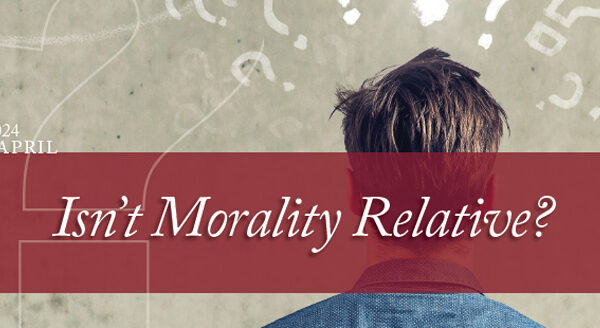Back to series



Argument from Agape
Click here to open a Print - Friendly PDF
Many books have been written about love. It is at the center of our spiritual lives and at the heart of the believer’s witness.
Jesus says that the greatest command is to love God with heart, soul, strength, and mind (Matthew 22:36). Along with it we should love our neighbor as ourselves (Matthew 22:39; Leviticus 19:18). Jesus calls us to an even broader love including the neighbor and the enemy (Matthew 5:44). Even more we are to love as Christ loved us (Ephesians 5:1-2). Jesus gives us a new command that we are to love as He loved (John 13:34). The great love chapter (1 Corinthians 13) holds that we can have all kinds of spiritual gifts, knowledge, and noble actions, but without love they amount to nothing.
All these emphases, though essential for our meditation and cultivation in thought and action, are well known. It is not so well known how radical Christ’s love is in comparison to any other worldview or religious system. No other approach gives a significant place to “agape” or other-centered love. John Stott defines “agape” love as the sacrifice of self in the service of another. In other words, it is a voluntary giving of yourself.
One author, writing about agape, argues that “agape” love is essentially a Christian invention. In fact, it is only used once outside the Bible, where the goddess Isis is given the title agape. Such a word existed in the Greek culture, but the New Testament and particularly Jesus’ teaching place “agape” love front and center, filling it with a full, rich meaning it did not have before. Though you find the same loving God in the Old Testament, the emphasis on loving neighbor and enemy expands and stands out in bold letters in the New.
Another truly unique contribution not found in any non-biblical religion is the idea that “God is love” (1 John 4:8). Leon Morris says in his study of love, Testaments of Love:
Why does God love sinners? I have been arguing that He loves them because it is in His nature to love, because He is love. Unceasingly, He gives in spontaneous love. He loves not because of what we are but because of what He is: He is love. This is a new and distinct idea in Christianity, though in part of the Old Testament (notably in Hosea) we read about something very much like it. But it is not found in the non-biblical traditions.
Emil Brunner uses the analogy of radium. You could mention all the properties of radium, its molecular structure, chemical properties and so on; but if you failed to say that it radiates you would miss something essential. Similarly, God has many attributes such as holiness, justice, goodness, all-knowledge and all power, but if you omitted to say that He constantly gives himself in love—in fact, that He is love—you would miss that which really matters. Brunner wrote:
The message that God is love is wholly new in the whole world. We perceive this if we try to apply the statement to all the divinities of the various religions of the world: Wotan is love; Zeus, Brahma, Ahura, Mazda, Vishnu, Allah is love. All these combinations are obviously wholly impossible. Even the God of Plato who is the principle of all Good is not love. Plato would have met the statement “God is Love” with a bewildered shake of the head. From the standpoint of his thought, such a statement would have been utter nonsense.
The primary reason followers of Christ love is that God first loved us. We are to love others, not just because He commands it, but because of who He is. We are to be just because God is just, we are to be holy because He is holy (1 Peter 1:16), and we are to love because He is love (1 John 4:7-8).
But what is the difference between the Old Testament and New Testament views of God’s love? One author puts it this way: “What then is the distinctive difference between the Old Testament view of God’s love and that of the New Testament? The most obvious and the most important difference, in fact the only significant difference, is the Cross.”
As we have seen, agape is central to the New Testament, and the belief that God is love is not only unique but also key to what motivates our love. But the key to what love means is seen in Jesus’ self-sacrifice on the cross. Leon Morris says, “It is the cross that brought a new dimension to religion that gives us a new understanding of love. The New Testament writers saw everything in its light, finding their ideas about love revolutionized by what the cross meant.”
For example, husbands are described in Ephesians as the “head of the wife” but immediately called to love their wives “just as Christ loved the church and gave himself up for her” (Ephesians 5:35). What is the kind of love Christ had for the church? Well, it was not based on our goodness and beauty. This love is poured out for us in spite of our unattractiveness. C.S. Lewis in The Four Loves wrote about the husband’s love in relation to his “headship”:
This headship, then, is most fully embodied not in the husband we should all wish to be but in him whose marriage is most like a crucifixion, whose wife receives most and gives least, is most unworthy of him, is—in her own mere nature—least lovable. For the church has no beauty but what the Bridegroom gives her; he does not find, but makes her, lovely. The chrism of this terrible coronation is to be seen not in the joys of any man’s marriage but in its sorrows, in the sickness and sufferings of a good wife or the faults of a bad one, in his unwearying (never paraded) care or his inexhaustible forgiveness: forgiveness, not acquiescence.
Sacrificial love, giving till it hurts, is called for not only in marriage but in all our relationships. Jesus told his disciples, “A new command I give you: Love one another. As I have loved you, so you must love one another” (John 13:34). As Christ gives himself for us, so we are to give our lives for others.
Following the above verse, Jesus adds, “By this everyone will know that you are my disciples, if you love one another” (John 13:35). Jesus’ new command to love is one which believers are to obey, which of course implies that it is possible to disobey. Believers in Jesus are not automatically loving. They can be disobedient to what Jesus asks of them. Jesus says that the way other people will know that believers are disciples is by their love, if and only if they love one another.
But couldn’t this love come equally from other world views and religions? No! The pantheist world view maintains that All is One and that the world is an illusion (Shankara). The whole thrust of the New Age perspective is inwards (to the divine within) or upwards (to merge their identity to that of the One) but definitely not outwards (to an illusory world).
Os Guinness, in his book, Unspeakable, talks about the world-denying quality of Eastern religion:
This view of ultimate reality means that neither traditional Hinduism nor traditional Buddhism shows the slightest concern about human rights… Entirely logical within their own frames of thinking, Hinduism and Buddhism regard the Western passion for human rights as a form of narcissism as well as delusion. R.C. Zaehner, who followed Radakrishnan in the Spaulding Chair of Eastern Religions and Ethics at Oxford University, underscored their logic bluntly: “In practice it means that neither religion in its classical formulation pays the slightest attention to what goes on in the world today.”
Such a world-denying quality makes it impossible to consistently address social issues such as human rights (or love). If distinct people are part of the illusion, why should we give regard to them as of significant or ultimate concern?
Similarly, when we look at atheism or materialism, there is no mandate for other-centered love. Darwin once said that any truly other-centered trait “would annihilate my theory, for such could not have been produced by natural selection.” Richard Dawkins has a book titled The Selfish Gene and writes, “Universal love and the welfare of the species as a whole are concepts which simply do not make evolutionary sense.”
This summer, I met with a professor who speaks and writes widely on evolutionary biology. He has a unique argument that he has developed over the years. You might call it the argument from altruism. Basically he argues that there is no Darwinian way to get to altruistic, truly other centered “agape” love.
There is, he says, a growing recognition that materialist arguments are inadequate to explain altruistic love. For instance, Richard Dawkins admits on the last page of The Selfish Gene that we alone in the universe are capable of altruism. Dawkins says that, “disinterested altruism—is something that has no place in nature, something that has never existed before in the whole history of the world.” Because of this admission he has to, as we will soon see, give up his materialism. Materialism seems to entail a couple of central ideas:
1. All things are determined or facilitated by physical, material causes.
2. All genes produce behaviors that benefit the individual. To use a double negative—No gene produces behaviors that fail to benefit the survival of that gene pool.
This means that anything truly selfless is excluded. But it seems that there is selfless, altruistic, other-centered love. How can a Darwinian explain this phenomenon?
There are various attempts to get around this problem. The professor I referred to earlier called these approaches “work-arounds.” First, the idea of kinship encourages suffering or death to protect the immediate family (gene pool). But this is of limited scope and value in the debate because it does not apply to those outside the family (immediate or extended). Second, there is a direct reciprocal argument. You could sacrifice for those from whom you would expect to get an equal or better sacrifice. You could even call it a fair trade. Third, there is the indirect reciprocal argument that would maintain that such “selfless” acts can be done so that you are made to appear good in the community’s eyes and thus benefit eventually.
But can all human acts be reduced to the above ultimately self-centered actions? These theories only rise as high as “loving those who love you” (Matthew 5:46). Jesus calls believers to go beyond this kind of love and love our enemies. That goes beyond anything materialism can explain.
In fact, Dawkins knows that we are capable of altruistic love (as we saw earlier). How can he explain his materialism and the “selfish gene?” The professor maintains that Dawkins gives up his materialism. Dawkins postulates the existence of “memes” (in addition to genes)—non-material, ethereal (spiritual?) entities that infect the human mind and make people do what they wouldn’t do otherwise. These “memes” seem to hop from person to person like a virus. Dawkins makes up this vague, unsubstantiated, unverified “meme” to explain things like “agape” love. The professor asked one such biologist, “How is a meme different from a demon or the Holy Spirit?” There was no clear answer forthcoming.
Many of these atheists are nihilists (no purpose, no morals, etc.) but they don’t like the implications of such a position. For instance, David Sloan Wilson’s book Darwin’s Cathedral values religion’s effective promotion of commitment and community. Beliefs of religious people are wise—but false. They are practical “truths” that have beneficial results for society but they have no basis in reality. Others such as Michael Ruse argue in the book Taking Darwin Seriously that moral realism has to be jettisoned. When asked whether he would give any place for morality, Ruse replied that he acted on the basis of sheer preference: “I do whatever I feel like doing.”
The professor held that it is of some value to point out the nihilistic implications of evolutionary biology and expose their feeble attempts to explain things like morality and love that provide huge holes in their account of life. It also might be more economical (less time) to develop the “argument from altruism” as the central argument against Darwinianism. However, the best way to disprove this theory is to act in an “agape” way—love our enemies, give sacrificially without any thought of return, love as Jesus loved. Thus we can demonstrate in these loving actions something that materialistic theories can’t explain. People recognize that when they encounter such love, they are encountering something unusual. You can show materialism false by your love.
Certainly materialists and pantheists can and do love. In fact, they may be more loving than some Christians. But they lack any basis (motive) to sustain “agape” love.
What can we take from this theme study?
1. Love is at the center of our spiritual lives and at the heart of the believer’s witness.
2. Jesus says that the greatest command is to love God and neighbor.
3. Christ gives us a new command to love as He loved.
4. The centrality of “agape” love in the New Testament is an utterly unique emphasis compared with other world views and religions.
5. The idea that “God is love” is also another utterly unique teaching of the New Testament.
6. The difference between the Old Testament and New Testament idea of God’s love is the cross.
7. Jesus says you will know his disciples by how they love one another (and others).
8. This other-centered “agape” love cannot be motivated or sustained by pantheism or materialism.
9. The thrust of pantheist philosophy (Shankara) is inward and upward but not outward.
10. Darwinian materialism has nothing that can explain “agape” love. Both genes and the whole of nature are selfish.
11. Materialists are unsuccessful in their desperate attempts to explain “agape” love.
12. The best way to demonstrate the falsity of pantheism and materialism is to love in an “agape” way.

Arthur W. Lindsley
Senior Fellow for Apologetics, CSLI Arthur W. Lindsley is the Vice President of Theological Initiatives at the Institute for Faith, Works, & Economics. He has served at the C.S. Lewis Institute since 1987 both as President until 1998 and currently as Senior Fellows for Apologetics. Formerly, he was director of Educational Ministries at the Ligonier Valley Study Center, and Staff Specialist with the Coalition for Christian Outreach. He is the author of C.S. Lewis's Case for Christ, True Truth, Love: The Ultimate Apologetic, and co-author with R.C. Sproul and John Gerstner of Classical Apologetics, and has written numerous articles on theology, apologetics, C.S. Lewis, and the lives and works of many other authors and teachers. Art earned his M.Div. from Pittsburgh Theological Seminary and a Ph.D. in Religious Studies from the University of Pittsburgh. COPYRIGHT: This publication is published by C.S. Lewis Institute; 8001 Braddock Road, Suite 301; Springfield, VA 22151. Portions of the publication may be reproduced for noncommercial, local church or ministry use without prior permission. Electronic copies of the PDF files may be duplicated and transmitted via e-mail for personal and church use. Articles may not be modified without prior written permission of the Institute. For questions, contact the Institute: 703.914.5602 or email us.
COPYRIGHT: This publication is published by C.S. Lewis Institute; 8001 Braddock Road, Suite 301; Springfield, VA 22151. Portions of the publication may be reproduced for noncommercial, local church or ministry use without prior permission. Electronic copies of the PDF files may be duplicated and transmitted via e-mail for personal and church use. Articles may not be modified without prior written permission of the Institute. For questions, contact the Institute: 703.914.5602 or email us.
-
Recent Podcasts
A Welcome Change in Apologetics
by Randy Newman, Aimee Riegert on April 19, 2024We’re burdened for our friends who don’t know...Read More
-
Questions That Matter Podcast – Samuel James and Digital Liturgies
by Samuel James, Randy Newman on April 19, 2024
-
The Side B Stories – Dr. James Tour’s story
by Jana Harmon, James Tour on April 12, 2024
-
Recent Publications
Isn’t Morality Relative?
by Christopher L. Reese on April 1, 2024It is widely accepted in the Western world...Read More
-
Do Muslims and Christians Worship the Same God?
by Andy Bannister on March 1, 2024
-
Artificial Intelligence and Its Impacts on Humanity
by John Lennox on February 13, 2024
0
All Booked
0.00
All Booked
0.00
All Booked
22140
GLOBAL EVENT: Keeping the Faith From One Generation To Another with Stuart McAllister and Cameron McAllister, 8:00PM ET
https://www.cslewisinstitute.org/?event=global-event-keeping-the-faith-from-one-generation-to-another-with-stuart-mcallister-and-cameron-mcallister-800pm-et&event_date=2024-05-17®=1
https://www.paypal.com/cgi-bin/webscr
2024-05-17

Next coming event
Days
Hours
Minutes
Seconds
GLOBAL EVENT: Keeping the Faith From One Generation To Another with Stuart McAllister and Cameron McAllister, 8:00PM ET
On May 17, 2024 at 8:00 pmTags
Speakers

Arthur W. Lindsley
Senior Fellow for Apologetics, CSLI
Team Members





